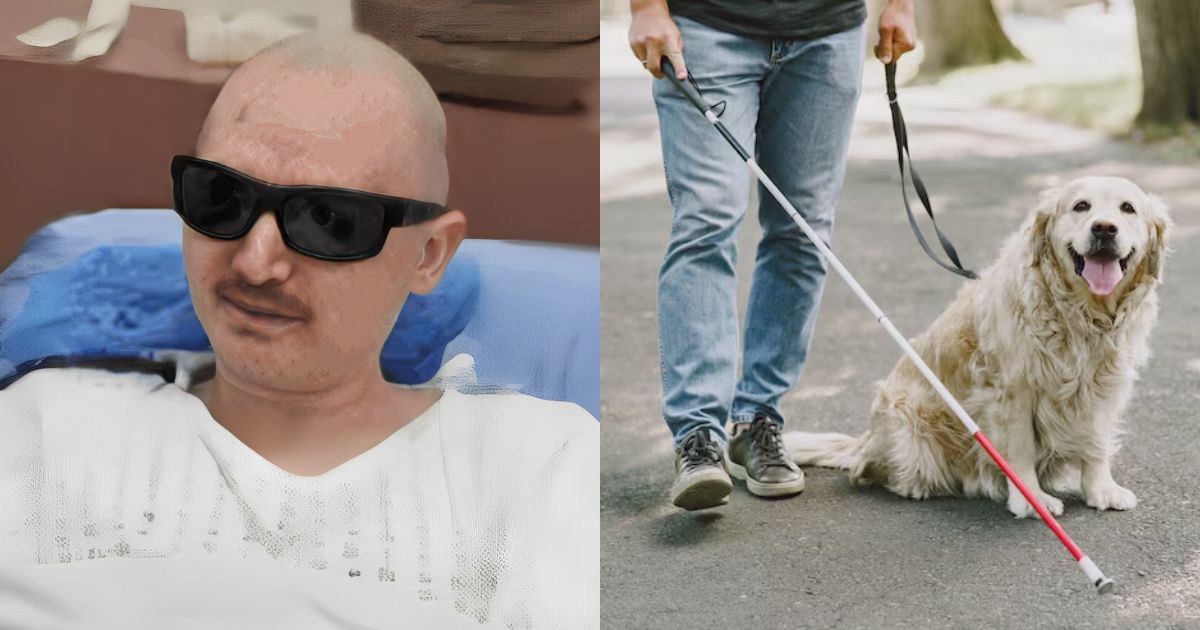Losing your sight at thirteen is the kind of thing that changes everything. Brent Chapman knows that. He lived it. For over twenty years, the North Vancouver man lived in a world he couldn’t see. Then, last year, everything shifted again. At thirty-four, he looked at his wife’s face — and actually saw it. The change came from surgery, which is so unusual that it sounds like science fiction.
Doctors took one of Brent’s teeth, modified it, and placed it in his eye!
Brent’s blindness started with a sudden, violent reaction to medication that destroyed his corneas. Recently, a specialist mentioned this experimental technique. It involved grafting a tooth into the eye to hold a new lens in place. Brent didn’t hesitate.
Chapman lost his sight at the young age of thirteen. It started with an ordinary painkiller (ibuprofen) but triggered a brutal reaction called Stevens-Johnson syndrome. The rare condition scarred his corneas. For years, he tried everything: experimental treatments, clinical trials, endless appointments. Nothing worked. Vision felt like a distant memory.
A 34-year-old man who had been blind for over two decades has regained his vision following a groundbreaking procedure known as “tooth-in-eye” surgery. The rare operation involved implanting one of his teeth into his eye, enabling him to see again after more than 20 years. pic.twitter.com/0accw6jfqh
— Instablog9ja (@instablog9ja) September 14, 2025
Then came Dr. Greg Moloney. An ophthalmologist at Mount Saint Joseph Hospital in Vancouver. He offered Chapman a surgery that sounded impossible. Surgeons would use one of Chapman’s teeth to hold a new lens in his eye. People call it the “tooth-in-eye” procedure. Straight out of science fiction, Moloney admitted. But for Chapman, it was real. And it was his last shot.
Developed in the 1960s, a rare eye surgery has been performed on just a few hundred patients globally. Doctors call it osteo-odonto-keratoprosthesis. It might be a mouthful, but the surgery hides a remarkable process. Surgeons remove one of the patient’s own teeth, carve it down, and drill a tiny hole through the center. They fit a prosthetic lens into that opening.
Then, through several operations, they implant this tooth-lens combination at the front of the eye. Why use a person’s tooth? It’s clever: your body rarely rejects what already belongs to it. Simple, really. But imagining it is another story.
“Usually, the reaction is shock and surprise and frank disbelief that [such a surgery] even exists,” Dr. Moloney told Today.com. Chapman admitted he felt the same. “It kind of sounded a little science fictiony. I was like, ‘Who thought of this? Like, this is so crazy.’”
But crazy works. When Chapman woke up from surgery, he could immediately see his own hands moving in front of him. Once healed, he had 20/40 to 20/30 vision in the eye. That’s sharper than most people with glasses on a bad day.
“I feel fantastic,” Chapman told WABC, describing how his restored vision revealed “a whole new world.” One moment stood out: when he first saw Dr. Moloney’s eyes. “We both just burst into tears,” Chapman said. “I hadn’t really made eye contact in 20 years.”
Brent Chapman can see again after doctors pulled out one of his teeth, flattened it, drilled a hole in it, placed a lens inside and implanted the tooth in one of his eyes. https://t.co/Ahbof2hUW0
— NBC4 Washington (@nbcwashington) September 12, 2025
Chapman’s medical journey is a landmark case. It shows how science can blur the line between the unsettling and the miraculous. To outsiders, it might seem like science fiction. But for Chapman, life has never looked clearer!













